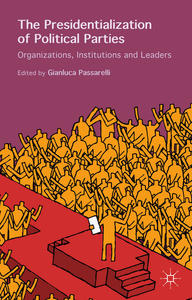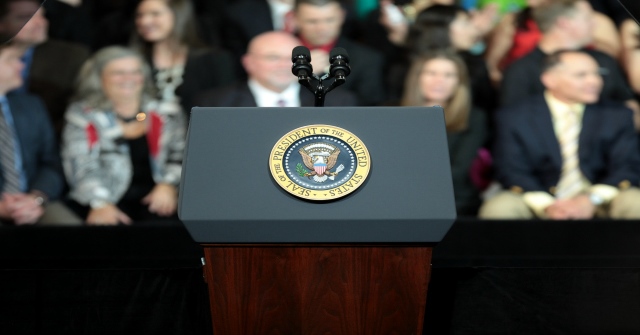Book Review: The Presidentialization of Political Parties: Organizations, Institutions and Leaders edited by Gianluca Passarelli
Edited by Gianluca Passarelli, new collection The Presidentialization of Political Parties: Organizations, Institutions and Leaders, explores why the level of party presidentialisation varies between countries, arguing that this is linked to both constitutional design and the genetic features of political parties. Although he finds that some of the country case studies provide stronger evidence for the book’s central argument than others, Raul Aldaz appraises this book as a valuable contribution to the field that will be of particular use to scholars of comparative politics.
The Presidentialization of Political Parties: Organizations, Institutions and Leaders. Gianluca Passarelli (ed.). Palgrave MacMillan. 2015.
 The headlines on US politics, currently covering caucus elections, are filled with names – Clinton, Cruz, Rubio, Sanders, Trump – and their personal positions on a handful of policy issues, but they direct less attention to their parties or the ideological standpoints that Democrats and Republicans (should?) convey. Is modern politics therefore becoming a more person-centred phenomenon rather than party- or ideology-focused? And if so, why?
The headlines on US politics, currently covering caucus elections, are filled with names – Clinton, Cruz, Rubio, Sanders, Trump – and their personal positions on a handful of policy issues, but they direct less attention to their parties or the ideological standpoints that Democrats and Republicans (should?) convey. Is modern politics therefore becoming a more person-centred phenomenon rather than party- or ideology-focused? And if so, why?
The increasing importance given to specific politicians and/or presidential candidates is part of a broader trend that goes well beyond the US: what we might term ‘the presidentialization of politics’. Part of this phenomenon is ‘the presidentialization of political parties’, which refers to the increasing influence that presidents have on the behaviour and organisation of their parties. This new book, edited by Gianluca Passarelli, consists of a collection of country cases that provide an in-depth analysis of the extent of this presidentialisation of political parties and two possible explanations for its occurrence.
Before commenting on the content of the book, I would like to present two elements that could help with its reading. First, the concept of ‘presidentialization’ is contested: for instance, two other categories that refer to similar phenomena are ‘centralisation’ and ‘personalisation’. All these words try to remark on an empirical trend in which a ‘centre’, embodied in a person (presumably the president), gains political influence. The first chapter of the book briefly discusses this issue and presents a working definition of presidentialisation for the remaining chapters.
Second, this book locates itself in the intersection of two research agendas heavily influenced by David Samuels and Matthew Shugart (2010) and Angelo Panebianco (1988). The former present a compelling case that the organisation of parties ‘mimics’ the extent of the division of powers designed in a constitution, so that parties in presidential regimes will be more presidentialised compared with their parliamentary counterparts. In turn, Panebianco argues that parties’ ‘genetic features’, such as their original constituting organisations, influence their evolution. One merit of the book is the explicit connection of these two research agendas; this combination could be a more comprehensive approach towards understanding party organisation and behaviour.

Presidential Podium. Credit: Gage Skidmore
This short digression is useful because it helps to make clear the empirical strategy of the book. Editor Passarelli argues in the first chapter that the extent of the presidentialisation of political parties is the outcome of the country’s constitutional design – mainly its degree of separation of powers – in interaction with parties’ genetic features. Specifically, he argues that while the constitutional design of a country is a strong determinant of party presidentialisation, their genetic features could reinforce or attenuate this effect.
From Chapters Two through Twelve, the book presents country studies that elaborate the links between the extent of party presidentialisation given the constitutional design in each country and the key genetic characteristics of the main political parties. These cases cover a wide range of constitutional setups, from a ‘pure’ case of a presidential regime (the US) to the ‘pure’, Westminster-style, parliamentary case (the UK), along with various intermediate shades, including semi-presidential systems. The countries covered are Australia, Brazil, Chile, France, Germany, Italy, Japan, Poland and Ukraine. These countries also capture variations of democratic traditions: long-term consolidated cases as well as countries with more recent democratic transitions.
This range of cases is a good choice for the book’s strategy, because it helps to test if the initial theoretical claims travel well across democratic regimes. Thus, it is a strategy that could strengthen or reshape the theoretical starting point. However, in spite of the similar approach and structure of the country studies, some appeared clearer to me than others. For example, the chapter on Brazil seemed to persuade as to the validity of the argument logically, but in other cases I had the feeling that a lot of specific contextual detail gained space at the detriment of a more logical sequence of ideas.
The chapter on Brazil does a good job of presenting how institutional design and the original features of parties shaped the extent of presidentialisation of the Workers’ Party (PT). Given that the presidency is the big electoral prize and previous failed elections, the presidential candidate, Innacio Lula da Silva, in his third attempt took more control over his campaign (resources and policy platform) to the detriment of the party leadership. Once in office, Lula followed a similar strategy in the confirmation of his cabinet and in his re-election campaign. His party, the PT, has origins in the labour unions of the largest cities, peasants’ organisations and social movements; these groups are highly organised and exert influence on a non-negligible proportion of the electorate. The authors of this chapter therefore argue that the PT cannot be fully labelled as presidentialised because its constituting organisations were able to attenuate the increasing influence of the president.
The chapter on Poland also concludes that party features restrict the extent of party presidentialisation, but I did not completely understand why. The chapter recounts the power struggle and random events behind the emergence of political leaders like Donald Tusk, Lech Kaczyński and Lech Walesa in the context of a new party system following the fall of the communist regime. But my impression is that the chapter devotes much more space to describing how these leaders engaged with the political competition within and across parties than to explaining why the specific features of the new parties constrained the extent of presidentialisation.
At a more theoretical level, the chapters raise one important question: how exactly do institutions presidentialise parties? Certainly, all the country chapters make the case for different degrees of presidentialisation in parties, but how do we know that this happens as a consequence of institutional features? To be more graphic, I’ll compare two cases covered in the book, Chile and the US, that highlight the possible link between changes to their institutions (the explanatory variable) and changes to the presidentialisation of parties (the dependent variable).
Chile made its democratic transition in 1990 after seventeen years of a cruel dictatorship, inheriting an amended version of the constitution put in place by the former regime. While parties had been temporarily banned, by the time of the transition they maintained some of the characteristics they had during the period 1950-70. Chile is a good case to analyse how political parties operate under a new set of constitutional rules. If Chilean parties have become more presidentialised after the democratic transition, it is possible to argue that it was the result of a new constitution. The US, on the other hand, has had one constitution from its birth, and the appearance of the Democratic and Republican parties, as we know them, can be traced back many decades and even centuries if we dig deeper into their origins. So, if the extent of the presidentialisation of these parties has increased, but the constitution (explanatory variable) has not changed, how could there be a link? These questions intend to insert a dose of doubt to scrutinise and assess the plausibility and persuasiveness of the country cases and the book’s argument; it is not a final word.
Scholars of comparative politics are probably the targeted audience of this book, but readers interested in the increasing role of individuals in politics will also find it useful (although not always entertaining). The book offers a step forward in our understanding of the role of institutions in shaping political parties and politics.
—
This post originally appeared on the LSE Review of Books. It represents the views of the author and not those of Democratic Audit UK or the LSE. Please read our comments policy before posting.
—
Raul Aldaz is a PhD student (Development Studies) at the International Development Institute of King’s College, London. He holds a MSc (Economics) from the University of Warwick, and a MSc (Economics) from Baylor University. He is interested on the political effects of natural resource abundance and on the functioning of policymaking institutions; part of his PhD thesis investigates if and how Ecuador’s ruling party was a vehicle that facilitated the approval of the president’s policy agenda. His past professional experience is on the governance and transparency initiatives of extractive industries.





 Democratic Audit's core funding is provided by the Joseph Rowntree Charitable Trust. Additional funding is provided by the London School of Economics.
Democratic Audit's core funding is provided by the Joseph Rowntree Charitable Trust. Additional funding is provided by the London School of Economics.
Book Review: The Presidentialization of Political Parties: Organizations, Institutions and Leaders https://t.co/YxgFc9AXD7
Book Review: The Presidentialization of Political Parties: Organizations, Institutions and Leaders https://t.co/sM8mvmJ5JL
Book : The Presidentialization of Political Parties: Organizations, Institutions & Leaders ed. Gianluca Passarelli https://t.co/d2ijb4ohKY
[…] Book Review: The Presidentialization of Political Parties: Organizations …Democratic Audit UK, on Sun, 17 Apr 2016 00:35:16 -0700This range of cases is a good choice for the book's strategy, because it helps to test if the initial theoretical claims travel well across democratic regimes. Thus, it is a strategy that could strengthen or reshape the theoretical starting point … […]
Book Review: The Presidentialization of Political Parties: Organizations, Institutions and… https://t.co/TAhTmYeFUy https://t.co/TwJoLOmnUq